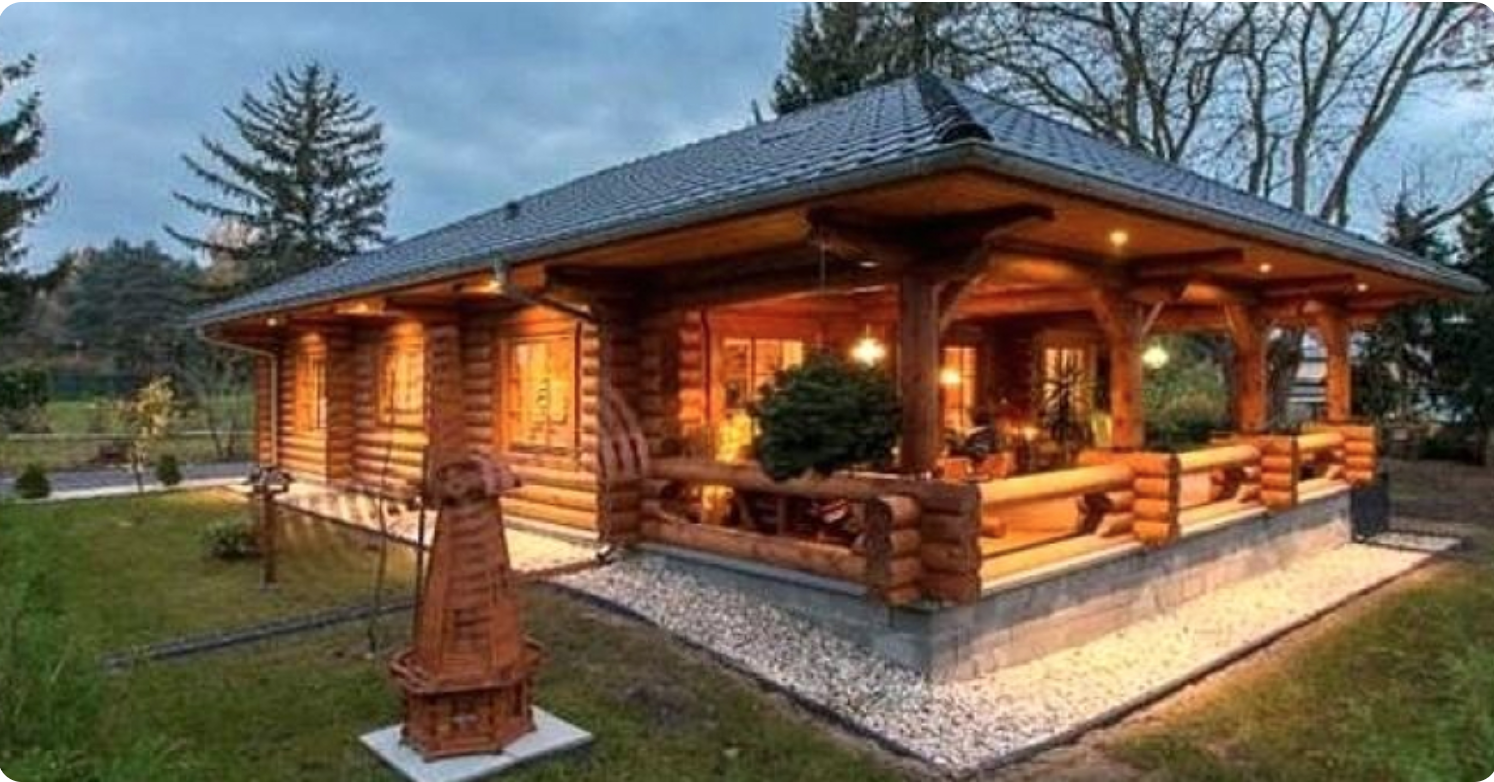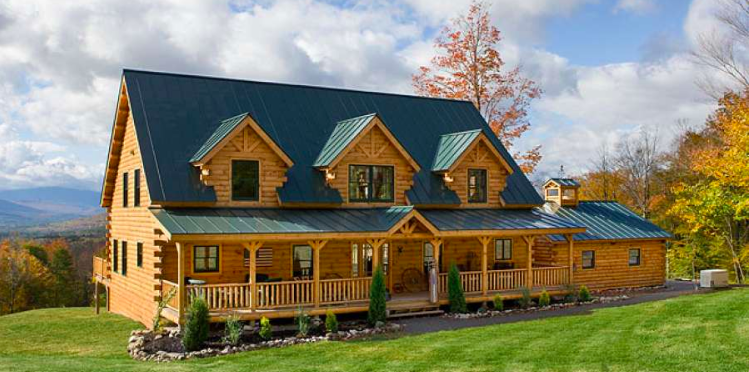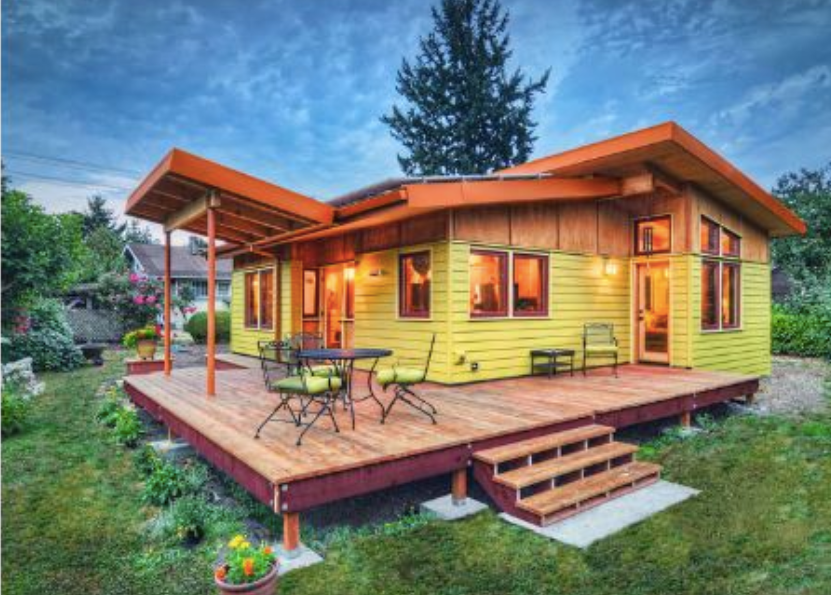The shape of this log house floor plan is an affordable option and a practical option for your dream log house. A rectangular log house floor plan is a good way to stay within budget when you are considering a cabin building. This log house is a good example that you can still get the wood cabin that you need without having to break the bank. Inside there is an open floor plan with the living room/dining area/kitchen which makes for great entertaining and a space that works well for families. At one end of the log house design is a great covered porch with log railings, perfect for sitting back and relaxing or entertaining family and friends. Inside the log house floor plan is plenty of round logs and wood for that cozy log house feel that everyone loves.

By choosing a cabin building, you have decided to live or stay in a place surrounded by wood. Log houses use building materials that are sustainable and renewable, and you can feel good about your choice. There are plenty of wood species that are commonly used to build log houses in North America. Almost all of these log choices are softwoods to include evergreens such as cedar, pine, fir, spruce, cypress, and hemlock. Although each log house builder favors certain species of wood, there are so many varieties of trees goes to show that not one type of tree makes a better log house design than another. Instead, the choice that you make will depend on the type of wood your log house company and what you prefer. Despite the many differences, the various woods all share some common characteristics.
The structure of wood. Wood is the hard, fibrous substance that is beneath the bark of a tree. Wood owes much of its character to the elongated, hollow, spindle shaped cells that constitute it. These spindle-shaped cells are arranged parallel to one other along the tree trunk, and this arrangement of cells affects some of the properties of the wood, mostly its strength and shrinkage. The wood’s fibrous nature will also influence how the wood is used. Trees grow by adding new wood in the process. Wood that has already formed doesn’t continue to grow, but each year, there is a new layer of wood, that is called an annual growth ring, that is added. The portion of the growth ring is formed in the spring and is light in color and is called the earlywood. The portion that is formed later in the growing season is darker, and this is called the latewood.
Wood has thermal properties. One of the benefits of wood is in the thermal properties that it possesses. Wood has several thermal properties that help its energy efficiency. Wood reacts to heat retention and releases it in a similar way to stone. Think about a large rock sitting outside in the summer sun all day. Then as dusk falls and the temperatures cool, bring the rock inside. Depending on the size of the rock, the stone will continue to emit the heat that it absorbed for hours. Logs work in the same way. This is known as thermal mass. Wood will conduct heat more slowly than the other building materials. Wood has a high rate of specific heat that is relative to that of brick or concrete, but because it doesn’t conduct heat quite as quickly as these building materials, it tends not to be used for heat storage.

